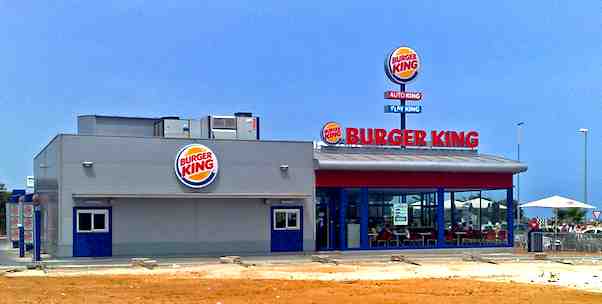
Burger King’s success as one of the world’s biggest fast-food restaurant chains is linked to effectiveness in applying generic strategies for competitive advantage. Burger King’s intensive growth strategies are also major contributors to business growth. The proper combination and implementation of these generic competitive strategies and intensive growth strategies lead to significant competitive advantages and growth in global business, despite the industry issues noted in the Five Forces analysis of Burger King. The company’s generic strategy supports competitive advantages based on cost, pricing, and food and beverage characteristics. On the other hand, an increasing market share is the main thrust of Burger King’s intensive growth strategies.
Burger King’s generic competitive strategies shape the company’s current and potential competitive advantages suitable for foodservice growth opportunities. Competitive advantages developed through these generic competitive strategies correspond to the business strengths enumerated in the SWOT analysis of Burger King. The intensive growth strategies are indicative of the company’s approach to continuing its global growth in the fast-food or quick-service restaurant industry.
Burger King’s Generic Competitive Strategies (Porter’s Model)
Burger King uses two generic strategies for competitive advantage: cost leadership and differentiation. The company’s primary generic competitive strategy is cost leadership. The generic competitive strategy of differentiation is also a success factor for Burger King in the face of market saturation involving multinational and local competitors. These competitive strategies serve different purposes in ensuring the company’s competitive advantages in the quick-service restaurant industry.
According to Michael Porter’s model, this generic competitive strategy of cost leadership involves minimizing costs, which can lead to low prices. Burger King’s operations management applies cost leadership through standardization of processes to minimize costs based on economies of scale and error prevention. A strategic financial objective based on this generic competitive strategy is to reduce operating costs so that Burger King can offer its food and beverages at lower and more competitive prices.
Burger King also uses differentiation as its secondary generic strategy for competitive advantage. Based on Porter’s model, this generic competitive strategy requires creating unique characteristics to differentiate the foodservice business from other firms. Burger King applies this generic competitive strategy through the grilling of burger patties. Also, slogans, such as “Have It Your Way,” “Be Your Way,” and “You Rule,” represent the fast-food company’s differentiation in terms of offering flexible options to its customers. A strategic objective based on this generic competitive strategy is to differentiate the business while considering the external factors identified in the PESTEL/PESTLE analysis of Burger King, to attract new customers, especially in markets where major competitors are already established.
Burger King’s Intensive Growth Strategies (Ansoff Matrix)
Market Penetration. Burger King’s primary intensive growth strategy is market penetration. The goal of this intensive strategy is to grow revenues from existing customers or fast-food markets where the firm already has operations. For example, Burger King implements this intensive growth strategy by opening new restaurants in its current markets to get a bigger market share. However, this growth strategy pushes for aggressiveness against Burger King’s competitors, including McDonald’s, Wendy’s, and Subway, as well as Dunkin’, Starbucks, and other foodservice firms.
A strategic objective connected to Burger King’s intensive growth strategy of market penetration is to expand the company’s franchise network. Burger King’s generic competitive strategy of differentiation also supports this intensive strategy by highlighting unique product features to penetrate markets and grow the business.
Market Development. Market development is Burger King’s secondary intensive growth strategy. To support business growth, this intensive strategy involves entering new markets or targeting new market segments. For example, the foodservice company implements this intensive growth strategy by opening new stores in overseas locations where it does not have operations. However, this strategy is only secondary or minor in Burger King’s business because the company already has operations in most markets around the world.
A strategic objective of market development as an intensive strategy is to grow Burger King’s quick-service restaurant chain by attracting new customers in new markets based on low prices. Thus, this strategic objective emphasizes low prices and corresponding pricing strategies in Burger King’s marketing mix (4Ps), which is supported through cost leadership as a generic competitive strategy.
Product Development. Product development is the least significant of Burger King’s intensive growth strategies. This intensive strategy enables the company to grow through the introduction of new products or menu items. Burger King only minimally implements this intensive strategy. For example, the company introduces new products at a slow rate. Most of these products remain on the menu for years.
A strategic objective linked to this intensive strategy of product development is to use product innovation to grow the business and satisfy the goals of Burger King’s mission statement and vision statement. This intensive growth strategy supports Burger King’s generic competitive strategy of differentiation through new products that are unique compared to those of competing firms.
Diversification. Burger King can implement diversification as another intensive growth strategy, but the company puts more importance on market penetration. In diversification, the company needs new business or new products, likely to complement the fast-food chain. This intensive growth strategy is insignificant to Burger King because it comes with high risk linked to success uncertainty.
References
- Burger King – Menu and Online Ordering.
- Ostanel, E. (2025). Innovation in strategic planning: Social innovation and co-production under a common analytical framework. Planning Theory, 24(1), 64-86.
- Restaurant Brands International Inc. – Brands.
- Restaurant Brands International Inc. Form 10-K.
- Silva, M. S. (2025). The Culture of Customer Service as a Strategy and Competitive Differentiator in Service Companies. In Evolving Strategies for Organizational Management and Performance Evaluation (pp. 545-562). IGI Global Scientific Publishing.
- Sobolev, D. (2025). Reimagining fast food: Consumers’ judgments and acceptance of fast food alternatives. Food Quality and Preference, 126, 105420.
- U.S. Department of Agriculture – Economic Research Service – Food Service Industry Market Segments.